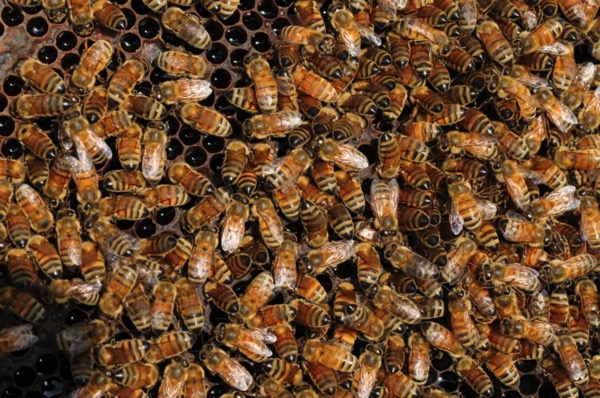Honeybees Still Dying
Just last year, it seemed there was something to celebrate despite planet Earth’s ongoing honeybee apocalypse: Bee colony losses were down. Not by enough, but they were down.
“It’s better news than it could have been,” said Dennis vanEngelsdorp, a University of Maryland entomology professor who led a survey of bee populations that reported a loss of 23 percent of bee colonies — less than 30 percent, the average from 2005 to 2013. “It’s not good news.”
Though scientists cited progress in battles against an Asian mite that has killed many an American bee, they had words of caution.
“One year does not make a trend,” Jeff Pettis, a co-author of the survey who heads the federal government’s bee research laboratory in Beltsville, Md., told the New York Times.
Turns out Pettis was right. VanEngelsdorp and other researchers at the Bee Informed Partnership, affiliated with the Department of Agriculture, just announced more than 40 percent of honeybee hives died this past year, as the Associated Press reported. The number is preliminary, but is the second-highest annual loss recorded to date.
“What we’re seeing with this bee problem is just a loud signal that there’s some bad things happening with our agro-ecosystems,” study co-author Keith Delaplane of the University of Georgia told the AP. “We just happen to notice it with the honeybee because they are so easy to count.”
The cause of the bees’ demise was not noted, but researchers said colony collapse disorder — which causes mass deaths of the bees for reasons not fully understood — was not necessarily the culprit. As the Times put it last year: “What has emerged is a complex set of pressures on managed and wild bee populations that includes disease, a parasite known as the varroa mite, pesticides, extreme weather and poor nutrition tied to a loss of forage plants.”
The state worst affected was Oklahoma, which lost more than 60 percent of its hives. Hawaii escaped relatively unscathed, losing less than 14 percent.
The USDA estimated that honeybees add more than $15 billion to the value of the country’s crops per year.

No comments:
Post a Comment